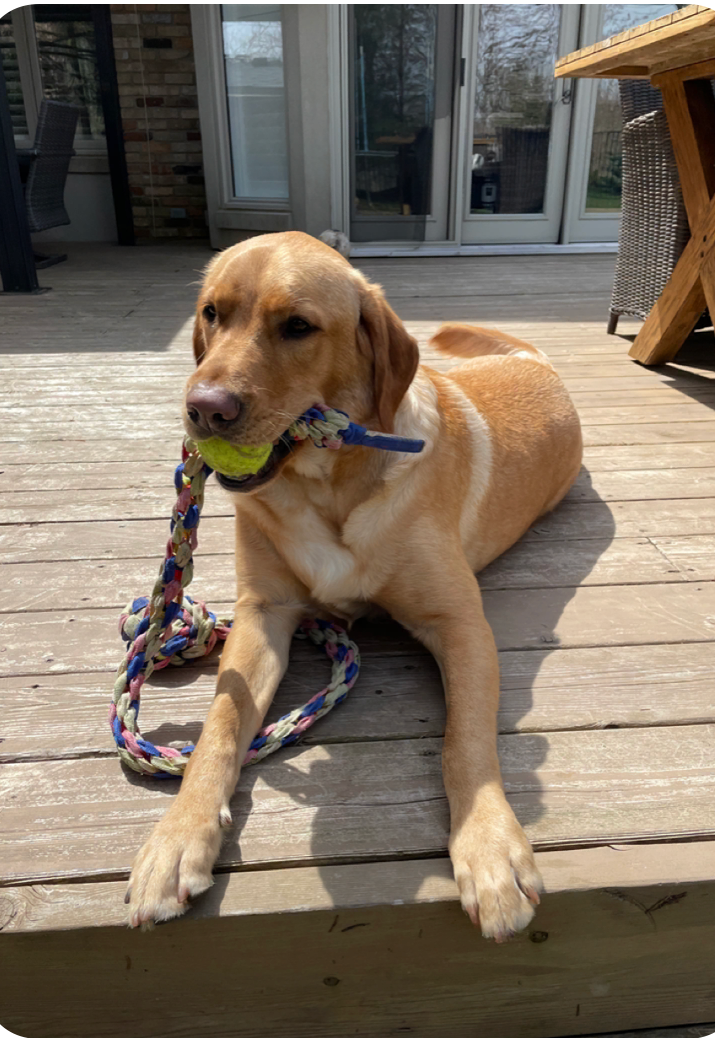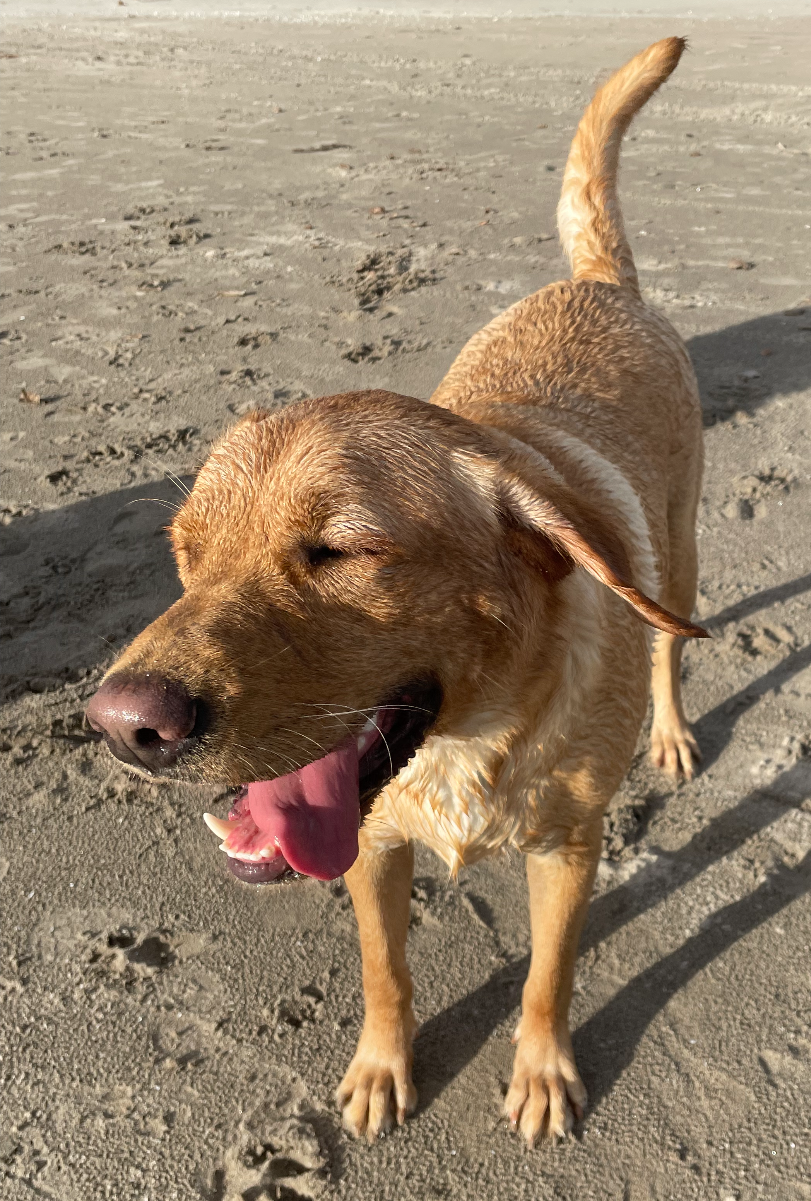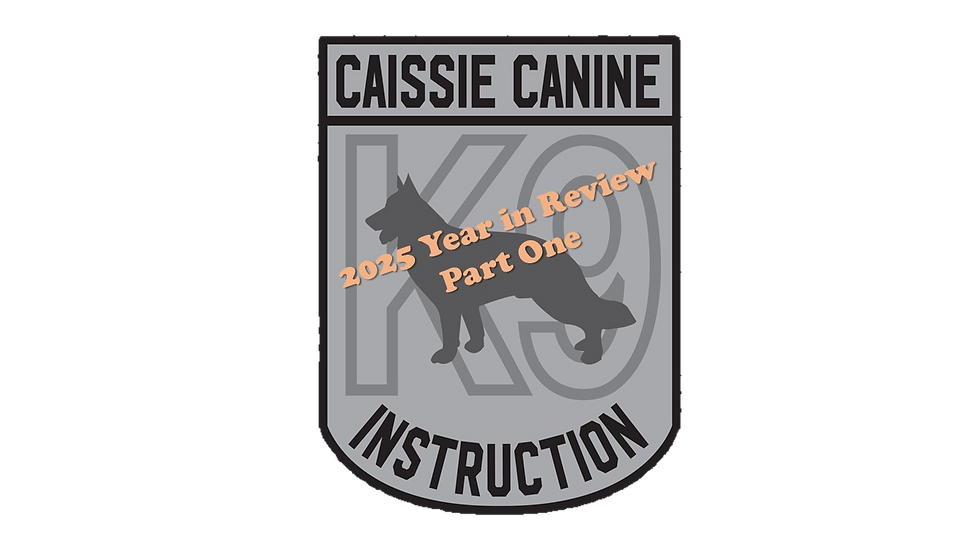Caissie Canine Instruction: Scavenging During Dog Walks
- caissiecanineinstr

- May 8, 2023
- 3 min read

***IMPORTANT NOTICE
We have had the honour of working with “RUFF START NEW BEGINNINGS” that operate out of Durham and Northumberland, and Paul has been asked to assist in Tupper’s training and recovery, for her to be ready for her forever home. They have spent thousands, this year alone to rescue as many as possible.

They are looking to do a mini fundraiser to help with costs, if any of our clients would like to donate you can email them directly: rsnbrescue2016@gmail.com or hit their donate button on their web page at www.ruffstartnewbeginnings.ca
THANK YOU EVERYONE !!!
We begin this week’s “RUFF TAILS” featuring a beautiful Golden Lab named Maverick.
Maverick is a fun-loving boy, coming up to his 2nd birthday and just this week marked his one year(!!) anniversary at his new home!!! Mav loves belly rubs and long hikes in the woods but always sticks by our side (except when he sees the occasional rabbit) Maverick thinks he is a lap dog, and forever tries to get up into our bed or on our lap when we are on the couch!!!

He’s worked hard with his second owners on his leash behaviours and has gotten better at not pulling us around everywhere! Maverick can’t wait to make it back up to the cottage this summer, as he loves swimming in the lake and loves going on kayak rides with his lifejacket.

Welcome to Doggie Dialogue
Our dog Daisy, a yellow lab, was the queen of scavenging on her walks/runs/ and playtime.

This is a natural behaviour that K9’s express, picking up little sticks, (or BIG ones), grass and dirt. Dogs are curious and love to explore new items. This does not fade with age.
However, this can turn into garbage, broken toys, spoiled food, and dangerous objects that can create stomach upset, vomiting, or a medical emergency. We had to train Daisy not to scavenge. Here are a few training tips for you.
First, ensure your K9 has eaten approximately 1 hour before you go out for your walk.

We have used a “slow feed” food bowl for a few of our dogs, including Daisy and they have worked wonders. Slowing down her eating helped her to feel full and satisfied before venturing out for her walks.
For K9’s that love to forge, snuffle mats and dog puzzles work well.

This will help drain some K9 energy before going out for their walk. These K9 toys will also help satisfy your dog’s desire to hunt. Remember all dog puzzles must be supervised when in use and put away after your K9 is done, as most K9’s try to chew the plastic, if left unsupervised.
Secondly, you can choose to walk your K9 in an open area, therefore helping to remove any temptations for your dog that is trying to eat garage/food/or toxic plants. Try to stay away from gardens and hedges as they can be filled with debris.

Thirdly, changing up your walking route and walking at a quick pace will assist with your K9’s temptation to scavenge.

Train/teach your dog to “leave it”, especially if they come across any garbage or spoiled food. Bringing high value treats on your walks will allow you to offer something much healthy then garbage.
Keeping your K9 engaged on you, playing tug, or ball will help distract them from scavenging.

Should you find this to be an uphill battle, please seek veterinarian assistance to rule out any medical reasons such as anemia or nutrition deficiency. Your vet may recommend a muzzle, especially if your K9 is at risk due to health problems from previous scavenging. This would be an extreme solution, but maybe necessary.

If your vet recommends a muzzle, you are best to purchase a vet approved muzzle that allows your K9 to pant and breathe through their mouth and able to eat and drink as well. Some dogs may not be able to wear a muzzle as it may affect their breathing. i.e., bulldogs and pugs.
This is a personal choice please do your research, if this is a consideration.





Comments